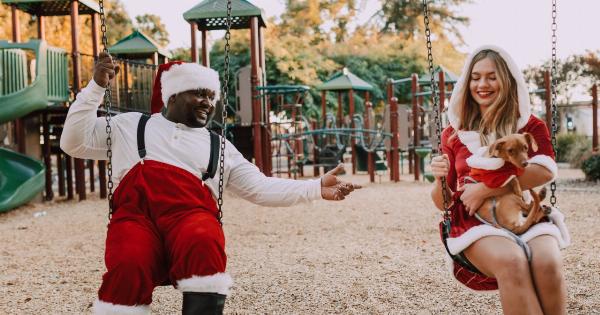Dealing with a mischievous dog can be a challenging and frustrating experience for any pet owner. From chewing on furniture to jumping on guests, misbehavior can disrupt our lives and even pose a risk to the dog’s safety.
However, it’s important to remember that dogs are not inherently naughty or mischievous – their behavior is usually a result of various factors such as boredom, lack of training, or unmet needs. In this article, we will explore effective strategies and techniques for dealing with a mischievous dog.
1. Assess the Underlying Causes
The first step in addressing a mischievous behavior is to identify the underlying causes. Dogs engage in mischievous behavior for a variety of reasons, including boredom, separation anxiety, fear, or lack of proper exercise.
By pinpointing the root cause, you’ll be better equipped to tackle the issue effectively.
2. Provide Sufficient Physical and Mental Stimulation
Many mischievous behaviors arise from a lack of physical and mental stimulation. Make sure your dog receives enough exercise every day to burn off excess energy. Engage in activities that challenge their mind, such as puzzle toys or obedience training.
A tired and mentally stimulated dog is less likely to engage in destructive behavior.
3. Establish Consistent Rules and Boundaries
Dogs thrive on routine and structure. Establishing consistent rules and boundaries will help your dog understand what is acceptable behavior. Clearly communicate your expectations and reinforce positive behaviors with rewards and praise.
Consistency is key in shaping your dog’s behavior.
4. Use Positive Reinforcement Training Techniques
Positive reinforcement training focuses on rewarding desired behaviors rather than punishing unwanted ones. When your dog exhibits good behavior, reward them with treats, praise, or playtime.
This method encourages your dog to repeat the positive behavior and helps strengthen the bond between you and your furry friend.
5. Redirect and Distract
When you catch your dog engaging in mischievous behavior, it’s important to redirect their attention to a more appropriate activity. Offer them a chew toy or engage them in play to distract them from the unwanted behavior.
By replacing the undesired behavior with a desirable one, you can gradually redirect their habits.
6. Create a Dog-Friendly Environment
Preventing mischievous behavior can be achieved by creating an environment that is conducive to your dog’s well-being. Remove objects that may tempt your dog to engage in destructive behaviors and replace them with appropriate toys.
Provide them with a designated space for relaxation and ensure they have access to food, water, and shelter.
7. Seek Professional Help if Needed
If your dog’s mischievous behavior persists despite your best efforts, consider seeking assistance from a professional dog trainer or behaviorist.
These experts can provide valuable guidance, tailor training methods to your dog’s specific needs, and help tackle any underlying issues contributing to the misbehavior.
8. Never Use Punishment or Physical Force
Punishment and physical force are not effective or humane methods of dealing with a mischievous dog. These approaches may create fear or aggression in your dog, ultimately exacerbating rather than solving the problem.
Positive reinforcement and patience should always be the foundation of your training methods.
9. Be Patient and Consistent
Addressing mischievous behavior takes time and patience. Dogs learn at different paces, so consistent training and reinforcement are crucial.
Stay calm and focused, even when frustrations arise, and remember that every small step toward improvement is a success.
10. Seek Opportunities for Socialization
Some mischievous behaviors in dogs can stem from a lack of socialization. Encourage positive interactions with other dogs and humans to help your pet develop proper social skills and reduce anxiety or fear-related behaviors.
Enrolling your dog in obedience classes or arranging playdates can contribute to their overall well-being and behavior improvement.




























